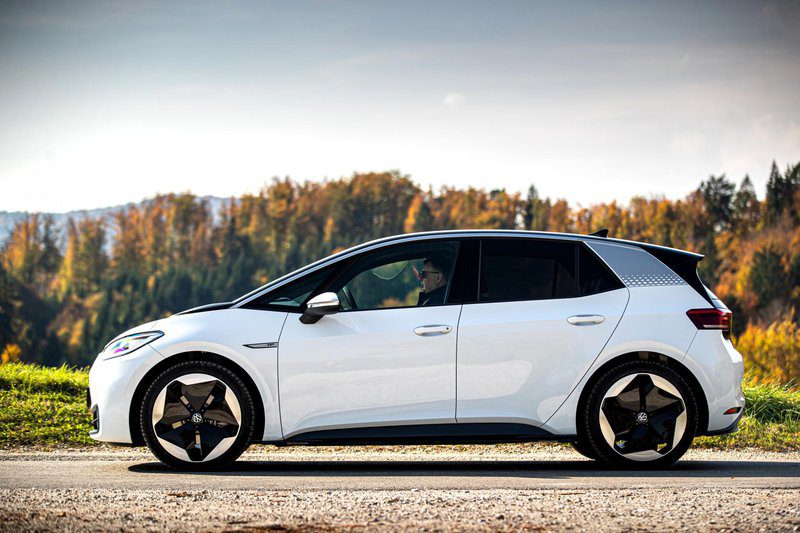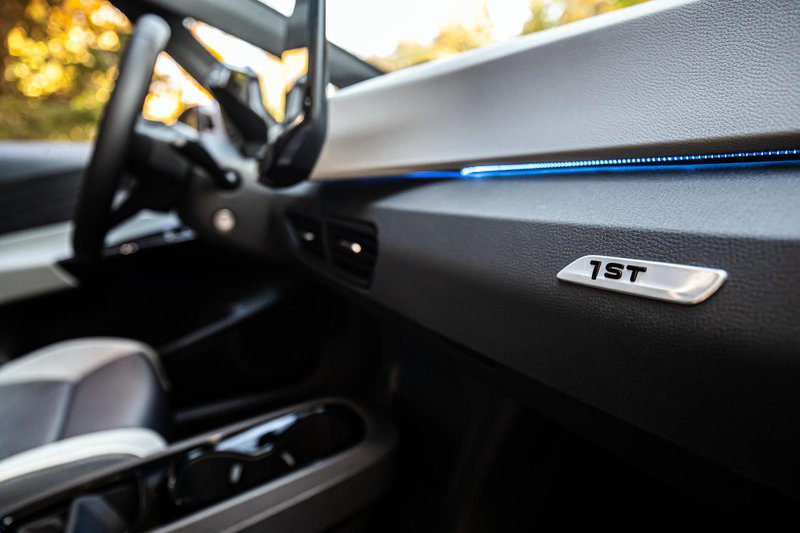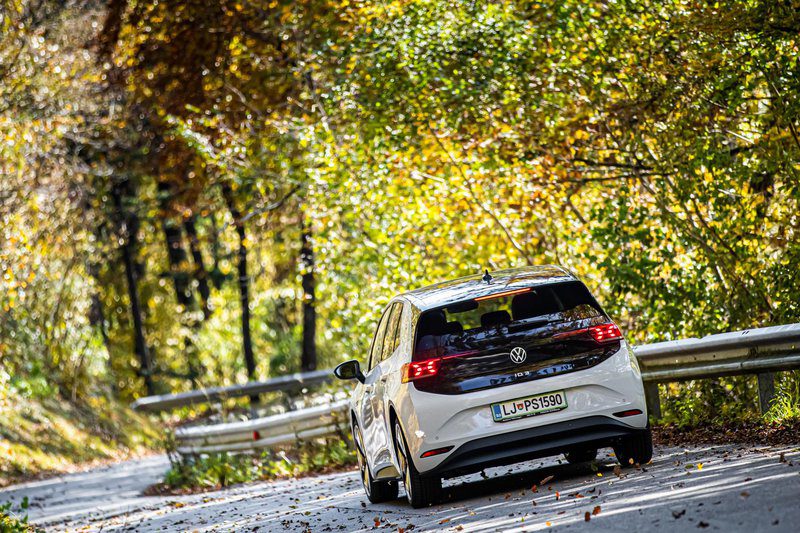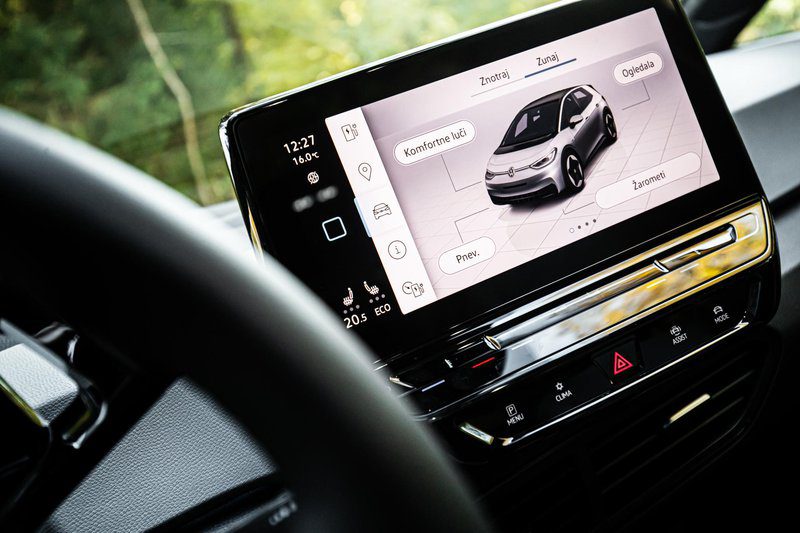
Test: Volkswagen ID.3 Max 1st (2020) // Is It Mature Enough For Most Drivers?
Content
So far, in Wolfsburg, electrification has been taught through electrical conversions Up! and golf, but this was not yet what forecasters and policymakers of sustainable mobility expected of them and what they set out to do with a strong announcement about the emergence of a multitude of electric and electrified vehicles in the next few years.
As a debut in this story, the ID.3 immediately attracted a lot of interest, primarily because it is the first true electric Volkswagen, and also, probably because of the large number of fans of the largest European car brand, to which they have remained faithful. even after the high-profile diesel case. Well, there is no shortage of those who would laugh spitefully if the empire began to fall apart.
Although I am not a big fan of electric vehicles and do not handle them well, I confess that I was sincerely glad that ID.3 appeared on our test, and even more so when it was submitted to me for "consideration".... Because I knew that the review would be completely different than if I wrote about Golf, and because they say that they are almost as easy to use as a smartphone, as I imagine, so he will think a lot for me, so I didn’t suffer with complex applications and asked for confirmation three times, and, last but not least, you don’t have to think all the time about where and when to charge the battery.

Taking a quick look at the ID.3, the first association is Golf's own champion, which has a very similar size and silhouette. Even casual observers have asked several times if this is a new Golf? Well, I really wouldn't mind if Volkswagen stylists designed the ninth generation Golf in a similar style., which will probably be on the roads in five, six years. ID.3 looks beautiful, fresh, even a little futuristic and unrestrained, like some modern Volkswagen models.
Apparently, the designers' hands were quite untied, and the leaders even encouraged them to pour out all their artistic flair. Certain body colors, including the white that the test car was wearing, seem a little unfortunate to me. but there are many interesting details on the outside, such as the large 20-inch wheels. (standard only in the best trim level) with low-profile tires and futuristic aluminum rim designs, tinted rear glass with a black combination of the rest of the tailgate, large panoramic roof or rounded front with headlights composed of LEDs.
Electrical difference
The ID.3 should establish itself as a stand-alone vehicle in the Volkswagen home and of course especially among the competition. And in discussions about electric vehicles, guesses and facts about their reach often arise. Of course, it would be better to drive at least 500 kilometers on a single charge with the least stress, but charging speed is equally important. since it is not the same whether the battery picks up 100 or more kilometers of electricity in a quarter of an hour at the charging station or whether it takes almost an hour to wait for that amount.

With an ID.3 with an average 58 kilowatt-hour battery (as was the case in the test car), you can supply 100 kilowatts of electricity, which means charging up to 80 percent of the capacity on Quick Charge takes a good half hour, so just for exercise , coffee and croissant. But the charging infrastructure in our country (as well as in much of Europe) is still relatively weak, and it is difficult to find a charging station that can transfer energy in excess of 50 kilowatts. And so the shutdown quickly stretches to over an hour, while it takes a good six and a half hours to feed power through the home charger cabinet if it manages to deliver 11 kilowatts.
ID.3 was created on a new basis, specially adapted for electric drive units (MEB). and interior architects were able to effectively use the spaciousness of the passenger compartment. With a Golf-like exterior, there is almost as much room inside as in the larger Passat, but that's not the case for the trunk, which is only an average base 385 liters, but has a baffle-level shelf and adequate space. at the bottom for both charging cables.
The electric sedan is suitable for four passengers who have enough room to avoid biting their knees, if there is a fifth in the back seat, the crowd is already noticeably more noticeable, although there is no hump in the middle tunnel and there is room for knees (at least in terms of external dimensions). ) is really enough. The front seats are excellent, the chair is luxuriously proportioned and well adjustable. (in this level of equipment with the help of electricity), but it also sits very well in the rear, where the length of the part of the seat is well measured.

Volkswagen developed a very high quality bar for interior design and materials a few years ago, but now that period is clearly over. Namely, hard plastic predominates, which the designers tried to enrich with an additional color tone and a play of veiled light, which appears only in the dark. The overall impression is that we have to consider whether buyers of this not-so-cheap car deserve a slightly more noble interior, especially since the brand cultivates desire ID.3 climbed to the top of the rankings... And because traditional buyers at Volkswagen are used to it too.
Simple and energetic
I was pleasantly surprised to go into the salon and start the electric motor (almost) i don't need a key anymore... I can open the door by pulling the hook and get in easily because the seat is set almost as high as in compact city crossovers. When I got behind the wheel, a light strip appeared under the windshield for a few seconds, signaling, along with a sound signal and a slightly uncertain activation of the central 10-inch screen, that the car was ready to move.
The steering column start switch is only used in emergency situations. The dashboard, if I can call it that at all, is made in a Scandinavian minimalist, Germanic religious style and has been digitized in our time. I can't even imagine analog meters and piles of mechanical switches in a modern electric vehicle.

A smaller screen in front of the driver (mounted on the steering column) is used to display basic data., the most important one is speed, and the middle one, which looks like a tablet, contains all the other applications and settings icons. The on-screen graphics are great, and less impressive is punching through the many switches that distract the driver and take their eyes off the road.
Additional information is displayed on the head-up screen at the bottom of the large windscreen. There are no more conventional switches; instead of them, so-called sliders appeared on the central screen, with which the driver regulates the operation of the air conditioning system and the radio, and you can also navigate through these switches on the steering wheel. Unfortunately, digitalization also sometimes shows its weakness and some features stop working, but Volkswagen promises that the updates will fix the flaws.
Ease of driving is another key feature of electric vehicles, and the ID.3 is already heavily geared towards this. For example, the driver can make driving easier with Intelligent Cruise Control, which recognizes traffic signs and automatically adjusts the speed and distance to vehicles in front, as well as informs you of the proximity of intersections.
In addition to the aforementioned automatic activation of the engine, the driver is also assisted by the satellite switch on the right side of the steering wheel display, which replaces the lever of the single-speed automatic transmission. It has only forward positions and the inclusion of recuperation during deceleration and braking, as well as when reversing. Driving performance is just good and steering balance and directional stability are excellent.
With a battery in the underbody and a rear engine that drives the rear wheels, the ID.3 is well balanced with a low center of gravity, which ensures a neutral position on the road with minimal rear outward force. in faster corners. Everything happens very naturally, most often out of a corner when the rear wheels feel like they no longer have proper ground contact before the electronics step in gently but surely to provide stability. With a decisive acceleration into a corner, the ID.3 pushes the weight back, the grip becomes even greater, and the front axle already indicates that, in the style of classic athletes, the inner wheel could remain in the air. Don't worry, I just feel ...

Acceleration feels pleasantly spontaneous, alive and light. The 150 kW engine is the most powerful in its class and delivers a lot of driving pleasure; At first, I missed the noise of a full-blooded four-cylinder petrol engine, but over time my ears got used to driving in silence or when the electric car secretly beeped.
Engine power and 310 Nm of instantaneous torque are more than enough for the vehicle's nearly 1,8 tonnes of dead weight. and already in eco-driving mode, the acceleration is so decisive that it overwhelms even more dynamic drivers. Looking through the communication system selectors, I chose a comfortable driving program to try, which added some agility, but nothing much happened, and the difference became even smaller when I chose the sport program. The differences are really small, but the power consumption is definitely changing.
On our standard lap, the average was 20,1 kilowatt-hours per 100 kilometers, which is a good achievement, albeit well above the factory numbers. But it's okay, because even taking into account these cars with internal combustion engines, there are significant gaps between the promised and actual fuel consumption. Of course, with a sharper ride, it would be an illusion to expect that the consumption will not increase, because simply by increasing the speed from 120 to 130 kilometers per hour, the need for electricity increases to 22 and another tenth of a kilowatt hour.
Thus, driving at full power and frequent fast acceleration contribute significantly to the faster discharge of the battery, which theoretically allows the battery to be fully charged. up to 420 kilometers of driving, and the actual range is about 80-90 kilometers shorter... And this, let's face it, is very decent, although not entirely without worries about charging.

The simple thing I missed on the ID.3 is the multi-stage recuperation setup (two-stage on this model).which will help save energy. The feeling of pressing the brake pedal also needs to be taught; in the event of sudden braking, it must be very heavily loaded, only then the electronics will use the full braking force of the mechanical braking. More intensive regeneration is encouraged, especially in city traffic where there is a lot of acceleration and deceleration, as well as where the car demonstrates agility and a small turning radius.
If it wanted to follow the mission of the Beetle and Golf, the ID.3 would have to be a popular electric car, but so far, at least considering the price (including the deduction of six thousand government benefits), it does not show anywhere near the average. But don't worry - cheaper implementations are yet to come. With its versatility and generous range, it is otherwise suitable for most everyday transport needs, as well as carefully planning charging stops for a longer trip. In addition, agility and refinement promise an interesting driving experience. And if it's time to buy an electric car, this Volkswagen is undoubtedly on the list of serious candidates.
Volkswagen ID.3 Max 1st (2020)
Basic data
| Sales: | Porsche Slovenia |
|---|---|
| Test model cost: | 51.216 € |
| Base model price with discounts: | 50.857 € |
| Test model price discount: | 51.216 € |
| Power: | 150kW (204 KM) |
| Acceleration (0-100 km / h): | 7,3 with |
| Maximum speed: | 160 km / h |
| Mixed flow ECE: | 14,5 kW / hl / 100 km |
| Guarantee: | General warranty 2 years without mileage limitation, extended warranty for high voltage batteries 8 years or 160.000 km. |
| Systematic review | 24 |
Cost (up to 100.000 km or five years)
| Regular services, works, materials: | 691 € |
|---|---|
| Fuel: | 2.855 XNUMX € |
| Tires (1) | 1.228 XNUMX € |
| Loss of value (within 5 years): | 37.678 € |
| Compulsory insurance: | 5.495 XNUMX € |
| CASCO INSURANCE (+ B, K), AO, AO + | 8.930 XNUMX ( |
| Calculate the cost of auto insurance | |
| Buy up | € 56.877 0,57 (km cost: XNUMX) €) |
Technical information
| engine: | electric motor - mounted transversely at the rear - maximum power 150 kW at np - maximum torque 310 Nm at np |
|---|---|
| Battery: | 58 kWh |
| Energy transfer: | the engine drives the front wheels - 1-speed manual transmission - 9,0 J × 20 rims - 215/45 R 20 tires, rolling circumference 2,12 m. |
| Capacity: | top speed 160 km/h - 0–100 km/h acceleration 7,3 s – power consumption (WLTP) 14,5 kWh / 100 km – electric range (WLTP) 390–426 km – battery charging time 7.2 kW: 9,5, 100 h (11%); 6 kW: 15:80 h (100%); 35 kW: 80 min (XNUMX%). |
| Transportation and suspension: | limousine - 5 doors, 5 seats - self-supporting body - front single wishbones, coil springs, wishbones, stabilizer bar - rear multi-link axle, coil springs, stabilizer bar - front disc brakes (forced cooling), rear disc, ABS, electric parking brake rear wheels (switch between seats) - rack and pinion steering wheel, electric power steering, 3,2 turns between extreme points. |
| Mass: | empty vehicle 1.794 kg - permissible total weight 2.260 kg - permissible trailer weight with brake: np, without brake: np - permissible roof load: np |
| External dimensions: | length 4.261 mm - width 1.809 mm, with mirrors 2.070 mm - height 1.568 mm - wheelbase 2.770 mm - front track 1.536 - rear 1.548 - ground clearance 10.2 m. |
| Inner dimensions: | longitudinal front 910-1.125 mm, rear 690-930 mm - front width 1.460 mm, rear 1.445 mm - head height front 950-1.020 mm, rear 950 mm - front seat length 500 mm, rear seat 440 mm - steering wheel ring diameter 370 mm |
| Box: | 385-1.267 l |
Our measurements
| T = 21 ° C / p = 1.063 mbar / rel. vl. = 55% / Tires: Continental Winter Contact 215/45 R 20 / Odometer status: 1.752 km | |
| Acceleration 0-100km: | 8,1s |
|---|---|
| 402m from the city: | 15,8 years ( 14,5 km / h) |
| Maximum speed: | 160km / h (D) |
| Fuel consumption according to the standard scheme: | 20,1 kWh l / 100km |
| Braking distance at 130 km / h: | 59,9 m |
| Braking distance at 100 km / h: | 37,9 m |
| Noise at 90 km / h | 59dB |
| Noise at 130 km / h | 62dB |
Overall rating (527/600)
You will never forget the first one. The ID.3 will be entered into the Volkswagen archives as the brand's first true electric vehicle. Despite some beginner awkwardness, this thigh is one of the most mature of the contenders.
Cab and trunk (89/110)
The electrically adapted design contributes greatly to the spaciousness, and the trunk is medium.
Comfort (98
/ 115)The ID.3 is a comfortable car with careful route planning or with enough fast charging stations, it is also suitable for longer routes.
Transmission (69
/ 80)The powerful electric motor will satisfy even more demanding drivers, but faster driving means more frequent battery charging.
Driving performance (99
/ 100)Despite being rear-wheel-drive, the rear leaks are barely noticeable in corners, and the electronics transmission is imperceptible but decisive.
Security (108/115)
The stock with electronic assistants is ideal for the best equipment, the ID.3 also proved itself in the EuroNCAP test.
Economy and environment (64
/ 80)Electricity consumption is not very modest, but the power is more than generous. However, consumption of about 20 kWh is a good result.
Driving pleasure: 5/5
It is undoubtedly a vehicle that sets standards in its class. Sharp and precise, fun to drive when you want it, forgiving and everyday (still) rewarding when taking a child to kindergarten or a woman to a movie.
We praise and reproach
Decent power reserve with full battery
Lively and powerful engine
Safe road position
Spacious passenger cabin
The cheapness of plastic in the interior
Intermittent communication failures
Complex customization
Relatively salty price
